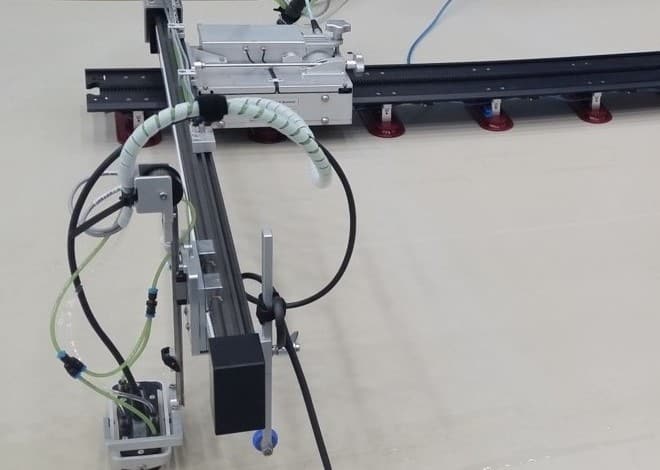Streamlining Aircraft NDT with Automated Test Equipment for Aerospace

Nondestructive testing (NDT) has long been a critical component of ensuring aircraft safety. The more accurate and efficient their equipment, the more confident inspectors can be in the data they gather and the recommendations they make based on that data. In order to achieve the highest quality of data and speediest inspection times, analysts need instruments with enough range to cover a wide testing radius and enough flexibility to scan a variety of materials at different angles quickly and in great detail.
That’s where automated test equipment for aerospace NDT comes in.
Inspecting Large Surface Areas with Complex Geometry
Automated ultrasonic scanning solutions for aerospace applications come with many of the same features as traditional UT scanners. The difference is that the analyst can take a more hands-off approach during the inspection process due to the motor actuator that moves via flexible tracks, allowing automated raster scanning in multiple directions. For even wider coverage, the analyst can connect two tracks and continually rearrange and reconnect them as the scan progresses, allowing the analyst to create a virtually infinite path for the scanner to follow.
An automated scanner can also conform to irregular geometries via suction cups, each with its own Venturi system to ensure that the scanner will remain in place even if one or more cups fail.
Example: An NDT analyst needs to inspect the expansive surface of a large airplane wing. With traditional, manual UT scanning equipment, this could be a lengthy and arduous task. Luckily, they have access to an automated scanner with flexible tracks. As the scanner moves on from the first to the second track, the analyst removes the first track and reattaches it in front of the second, repeating this step as the scanner makes its way across the wing’s surface. The scanner reads thickness variations stemming from corrosion throughout the testing landscape with ease, providing the analysts with comprehensive data that includes several minor defects that other NDT instruments would have been likely to miss.
Automated scanning not only provides detailed results but also yields a higher probability of detection on a repeated basis. It also eliminates trial and error, reducing the need for subjective interpretation. Instead, the automated scanner does most of the heavy lifting as the analyst oversees the testing process.
This translates into less time consumed per inspection, saving exponentially on long-term overhead. An automated system also helps preserve asset integrity while maximizing the lifespan of multidimensional welds.
Testing Composite Materials
In addition to scanning large surfaces and complex geometries, aerospace NDT equipment must also be capable of testing a wide variety of materials, including composites such as carbon laminate, fiberglass, and aluminum. Automated scanning is a better choice for composite materials because the orientation and shapes of the fibers can make traditional NDT scanning a laborious task.
Advanced NDT scanners working in conjunction with high-performance instruments can overcome the challenges of inspecting composites while hastening the inspection process via such methods as phased array ultrasonic testing (PAUT). Meanwhile, additional features such as corrosion mapping and time-of-flight diffraction (TOFD) can address irregular welds with great efficiency. In cases of material noise or flaw variation, the instrument can outline a more accurate picture of harder-to-assess flaws than more conventional equipment.
Example: An analyst needs to inspect a composite weld that includes carbon fiber composites. The scanner picks up the formation of voids in the material. Using an automated scanner with a fully integrated PAUT instrument featuring advanced software, the user is able to sync the UT signals with the arm movement of the scanner, resulting in more comprehensive, more reliable results than traditional NDT products could have provided.
Automated Test Equipment Aerospace
Automated UT scanning allows airlines to minimize inspection costs while gathering the most accurate data possible by lifting the burden of manual interpretation during testing. Automated scanners for aerospace NDT minimize human error while allowing analysts to scan large areas, complex geometries, and composite materials with greater ease and confidence than ever before.
With the help of advanced automated test equipment, NDT analysts can accurately pinpoint flaws in their earliest stages of formation and develop more proactive recommendations that will keep repair costs minimal while maximizing asset integrity and, thereby, ensuring passenger and employee safety.
Zetec is an experienced NDT company that provides automated scanners designed specifically for the aerospace industry. For quality equipment and tailored inspection plans, contact us today to learn more.





